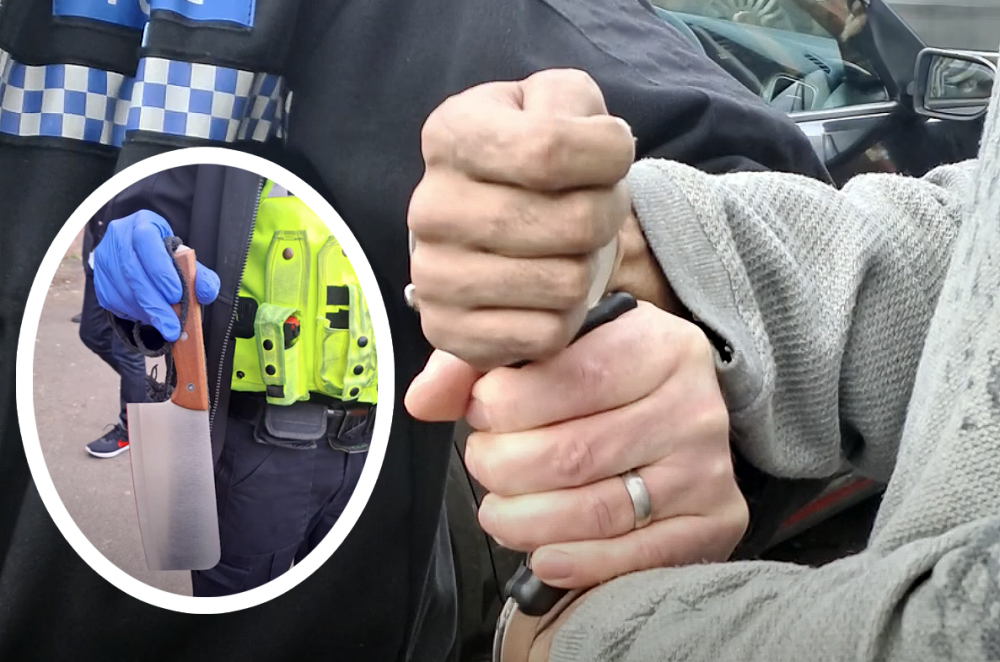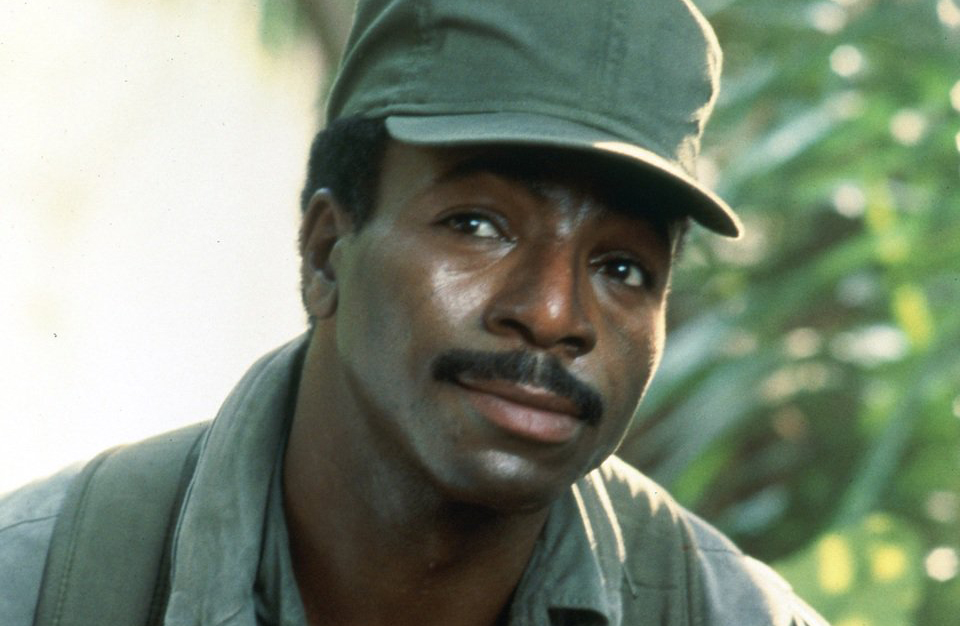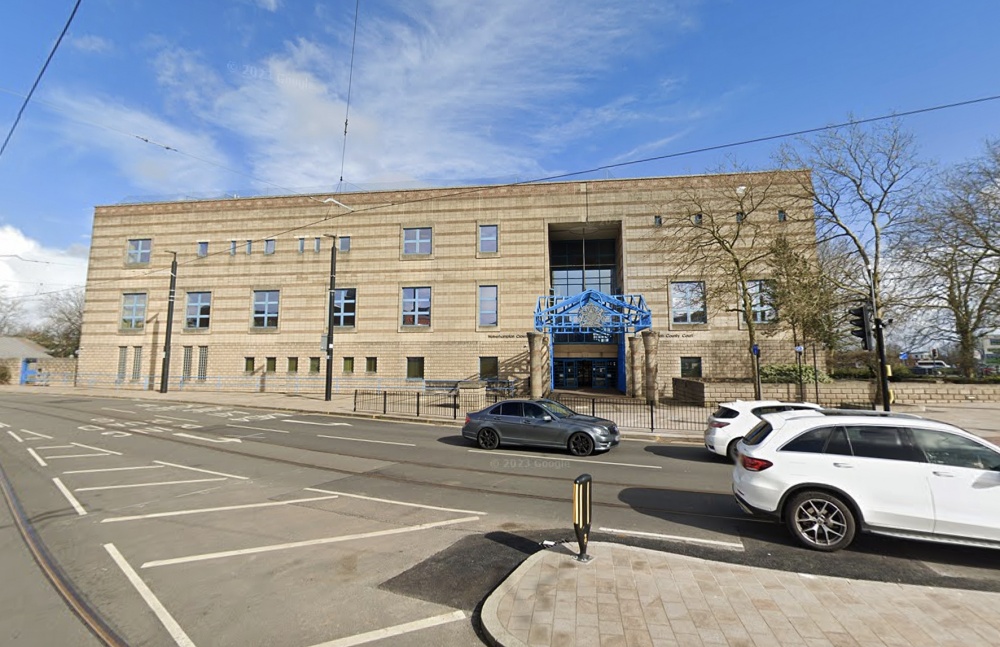Review: Joker (2019)
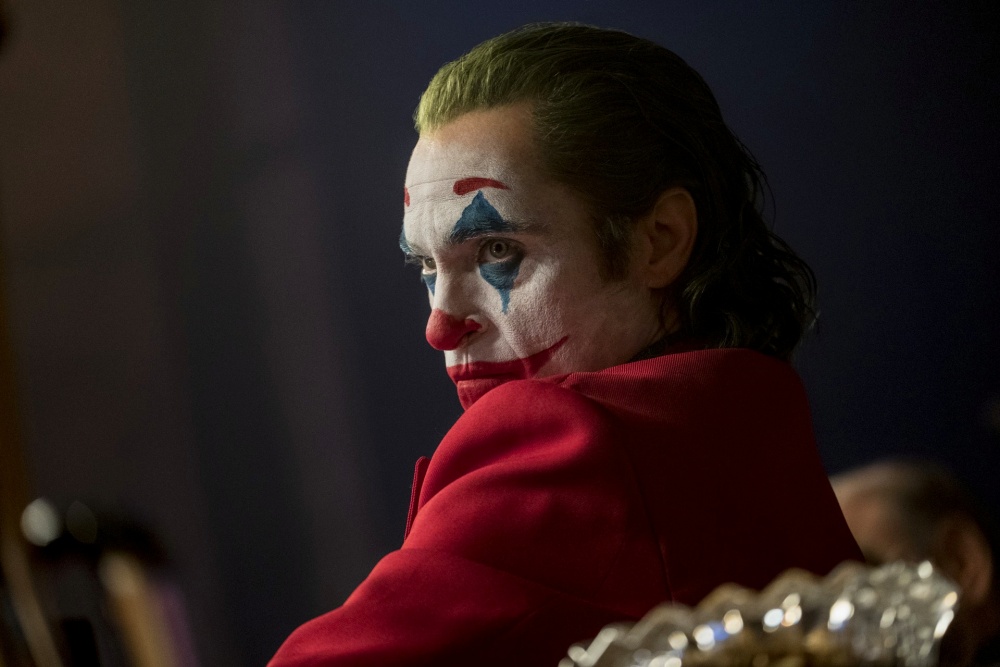
The wait is finally over! The origin story of the Joker is finally released into cinemas.
Does the film live up to expectations and laugh all the way to the Oscars? Or does it fail to deliver on its original premise to be a hard-hitting look into the mind of a fractured comic-book villain? Read on…
[THIS REVIEW CONTAINS SPOILERS]
As soon as this film went into production there was worldwide interest from comic-book fans about what kind of tone the film would adopt, and whether it would tie-in with existing threads and stories in the DC Universe.
This version of the Joker character stands apart from the DC Universe and is not tied to any other story or plotline. Furthermore, the tone of this film is for a mature audience and not marketed at children. The film makes this very clear by dispensing with the DC logo that usually introduces comic-book based movies and instead opts for a Warner Communications logo design from the 1970s.
Director Todd Phillips (‘The Hangover’ trilogy) shares the screenplay duties of ‘Joker’ with Scott Silver (‘8 Mile’, ‘The Fighter’). The script steers far away from the world of comic-books and delves into a world steeped in a hard reality. Ironically, a film entitled ‘Joker’ has very few laughs in it. This is a deadly serious film dealing with topical issues and themes.
Arthur Fleck (Joaquin Phoenix), a lonely clown-for-hire, lives with his invalid mother, Penny (Frances Conroy) in a decaying apartment block in a neglected and filthy part of the city. Fleck visits his distracted and overworked psychiatrist every week for evaluation and medication for his neurological condition. His life is a daily trudge for survival and he hungers for acceptance in a merciless society where the poor are ignored and marginalized while the rich are celebrated and toasted.
The only people who treat Fleck with a degree of humanity is Sophie (Zazie Beetz), a single mother living on the same floor as Fleck, and a work colleague named Gary (Leigh Gill), a dwarf who treats Fleck with genuine warmth and friendship during their brief encounters at work.
Fleck’s only moments of respite from his exhausting and taxing life is when he tunes into a nightly comedy chat show hosted by Murray Franklin (Robert De Niro) whom he idolises. He dreams of becoming a stand-up comedian and appearing on his hero’s show.
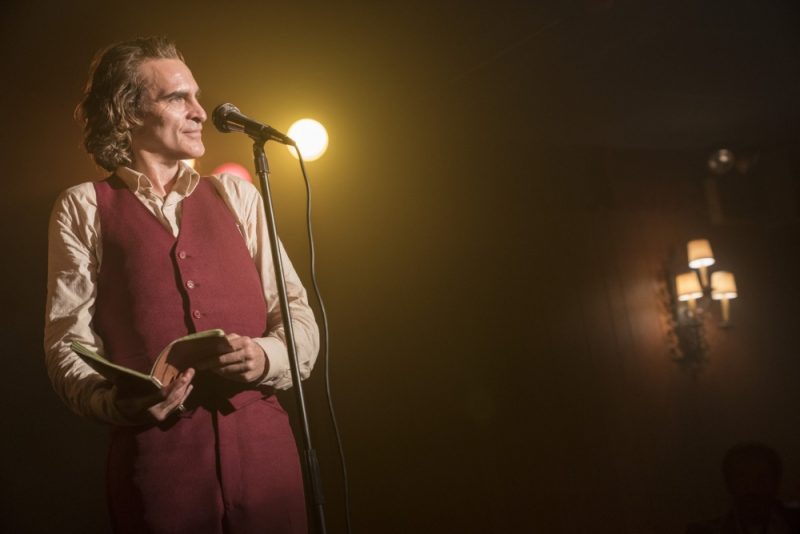 Warner Bros. Pictures
Warner Bros. PicturesFrom this plotline comes a myriad of themes and emotions which lifts ‘Joker’ from a genre film and places it into the realm of realist human drama. Genre films dictate and outline very clearly who the ‘hero’ and ‘villain’ are in a story.
The writers of ‘Joker’ refuse to colour code the film is such an explicit and simplistic manner. The story allows the audience to engage and think about the moral implications which unfold as the film progresses. The script is aimed squarely at an adult audience and the subtext explores social, political, and mental health issues that our world is currently grappling with on a daily basis.
Joaquin Phoenix’s performance as Arthur Fleck is searing, soul-baring, and fearless. It is a naked look into a terrifying abyss of pain and suffering. His body is emaciated, bruised, and fragile. His spine and ribcage are visible through the thin layer of his skin. People rarely ‘see’ or acknowledge him. He is a ghostly human being who is slowly fading away, bit by bit, both physically and mentally.
Phoenix never underlines the mental illness his character is suffering from, and his psychiatrist never states or reveals whether her patient is psychotic or schizophrenic. The condition is never outlined. That aspect is left to the audience to decide. And it’s uncomfortable. Why uncomfortable? Because most people will either identify with some of the symptoms and awkward social traits portrayed by Phoenix or they will know someone who has endured the same mental health issues.
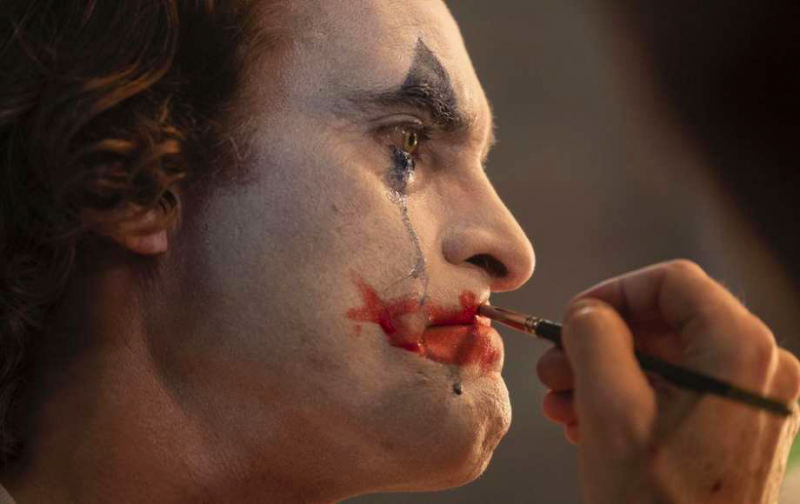 Warner Bros. Pictures
Warner Bros. PicturesThere is no ‘safe’ cinematic distance between the Joker and the audience. The veneer of artificiality that often keeps an audience a little passive and detached from what they see on a cinema screen is wiped away by the intense honesty being reflected in this human drama about a man battling quietly, and with frail dignity, with his medical condition.
We feel this man’s restlessness, his anxiety and his pain. The intense emotions leak out of the screen and infect the minds of the audience. The experience is deeply unsettling and uncomfortable. And more crucially, we begin to care for a man who has been broken and cast aside by a heartless society.
This traumatized human being has been isolated and forgotten, his voice has been silenced and his pain ignored. He is constantly mocked, or beaten, and his days are filled with the same routine of trying to find some hope and light in an ever darkening world. People around him pity him or they avoid him, and they talk behind his back.
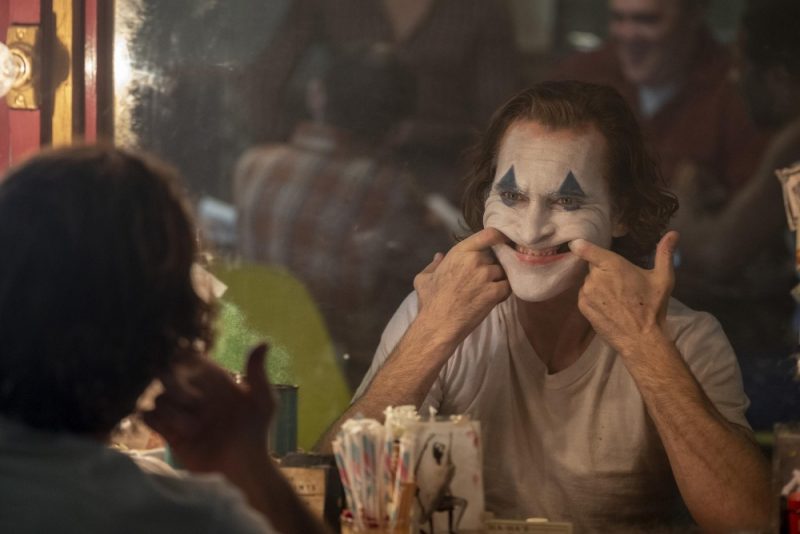 Warner Bros. Pictures
Warner Bros. PicturesWhen Phoenix laughs it is painful and disturbing. His cackling and throaty laughter is haunting and full of sadness rooted in deep pain. It is never ‘funny’. We are trapped in the room with him, and we feel every ripple of anguish being expressed by the character. His lips curl up in a nightmarish smile but his eyes are streaked and lined with sadness. Joker’s laughter is a howl for acceptance. He is always seen as an outsider, a nobody, a fool. His words, when he dares to speak in public, are softly spoken, sometimes with a slight stutter, and always with downcast eyes or with his back turned to the speaker.
He fears rejection and lives in his own world, carefully constructed, to avoid the horror and crime that runs rampant outside his apartment. Despite trying to eek out an existence away from the glare of a judgemental society he unwittingly and accidentally becomes ensnared by the trappings of the world as his mental health care is stripped away and he is cast adrift with no help or support.
Phoenix employs delicate dance movements, sometimes balletic, sometimes free flowing or fused with Tai Chi, to express some of the emotions that are buried deep in his soul. In those moments he becomes an artist painting his pictures with his dancing. In one remarkable moment he locks himself inside a public toilet after a traumatic moment and he uses his dancing to calm his nerves.
Every movement is an extension of his vocabulary. All of the things that he wants to express come flowing out of his hands and feet, his arms arching and caressing the space around him in a beautiful and graceful manner. The tranquility he desperately searches for in the outside world he finds through his private moments when his body becomes his ‘voice’.
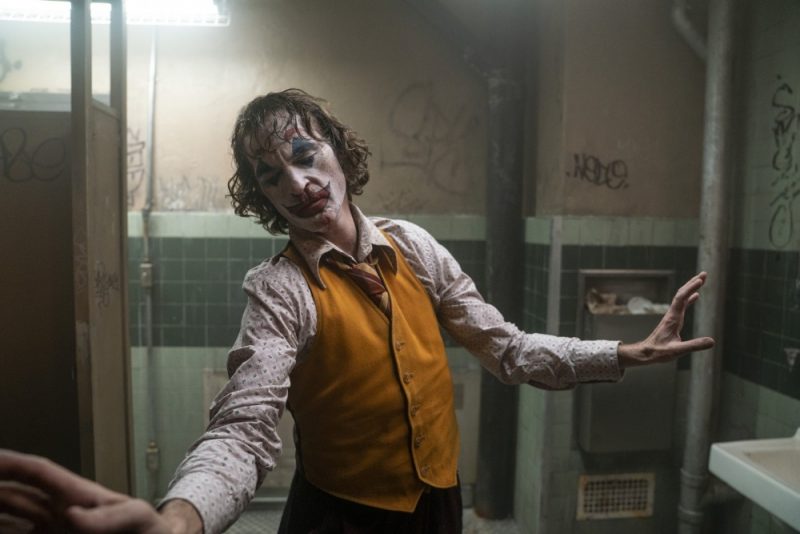 Warner Bros. Pictures
Warner Bros. PicturesThe only moment in the entire film where Joker feels a true sense of peace is when he returns home after another bleak and arduous day and administers medication to his ill mother, makes her some food, and then he climbs into bed with her to watch a chat show on a flickering television.
The outside world is held at bay for a few hours and he has a moment to escape into his own world of dreams and hopes.
The noise of the crowds, those who look at him with derision and suspicion, and those who mock and beat him down fade far away. The weight of the stigma which he carries melts away and he feels a sense of calm.
He has a real moment of solitude and he feels safe in this warm cocoon where he is free from prying eyes and pointing fingers. No one judges him in this space. His mother is the oasis in his life.
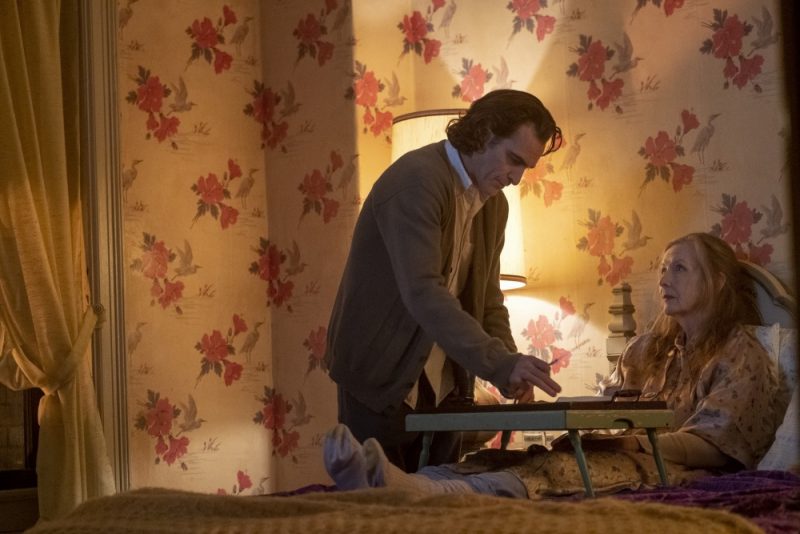 Warner Bros. Pictures
Warner Bros. PicturesThe make-up devised for Phoenix’s Joker is partly inspired by the design used by the notorious serial killer, John Wayne Gacy. The sharp edges and lines of the make-up manages to remove any trace of a comical circus clown.
This is not a clown who makes you laugh. This clown makes you pause, turn, and run. And for some this clown becomes a messiah figure. A leader of a revolution. An icon. The colour scheme for Joker’s make-up conveys a political undertone. The colours of the American flag now take on a whole new meaning. There is nothing patriotic here. The man wearing these colours has been brutalized and radicalized by rejection. Society has crushed him and pushed him into a dark recess on the edge of existence.
The one ‘true’ smile expressed by the Joker emerges in an emotionally charged scene where Phoenix uses the blood seeping from his mouth to smear a garish red smile across his face. For the first time his eyes light up with an unearthly energy and he embraces his calling.
Joker becomes a figurehead, an inspiration for the poor and downtrodden, they see him as someone who dares to challenge and stand up to the rich who have exploited and abused their power for personal profits. Politicians are corrupt, the educational system is broken, and there is no welfare or social support for the poor. From this cesspool of greed and corruption a man rises up. Joker’s time has come.
‘Joker’ dares to hold up a mirror to our world. Piles of rotting garbage bags litter the streets, rats scurry from alleys, and there is a constant cacophony of traffic in a concrete jungle that is stifling the life out of the city. This may be Gotham City but if you look closely it resembles cities that most of us are very familiar with in our daily lives.
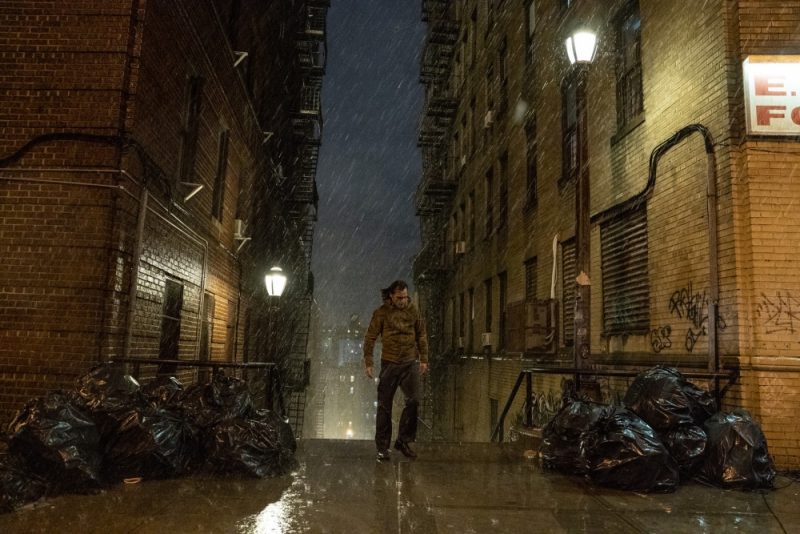 Warner Bros. Pictures
Warner Bros. PicturesThe set designers steer away from rich and opulent Gothic designs for the landscape. The world depicted in ‘Joker’ is very much a place designed and cut from the fabric of our times. The external world that the characters walk around in up on the screen echoes our world. A noir existence where even the daytime scenes are filled with a sense of alienation and desperation.
The cinematography by Lawrence Sher (‘The Hangover’ trilogy, ‘The Dictator’) conjures up a miasma of despair and paranoia which mirrors the fractured mind of Arthur Fleck. The atmosphere reeks of smoky shadows and tight framing that seems to cage in the characters. The very air seems to have been sucked out of the city. The concrete monolithic apartment blocks loom and huddle over the people.
This place is a circle of Hell itself, and there is no escape.
The cinematography constantly references stairs and the landscape in which Fleck wanders about in is littered with stairways and steps. He is always walking up these metaphorical steps. Toiling, day after day, and sometimes running from attackers or from the police, Fleck never seems to find any light or relief at the top of the stairs.
When Fleck tiredly ascends a flight of stairs towards his apartment block after a long day the scene is angled in such a way as to make the concrete steps look like a mountain hemmed in by two towers that are suffocating the small sliver of sky high above. The world is claustrophobic, always closing in, always squeezing, with little chance of relief or freedom.
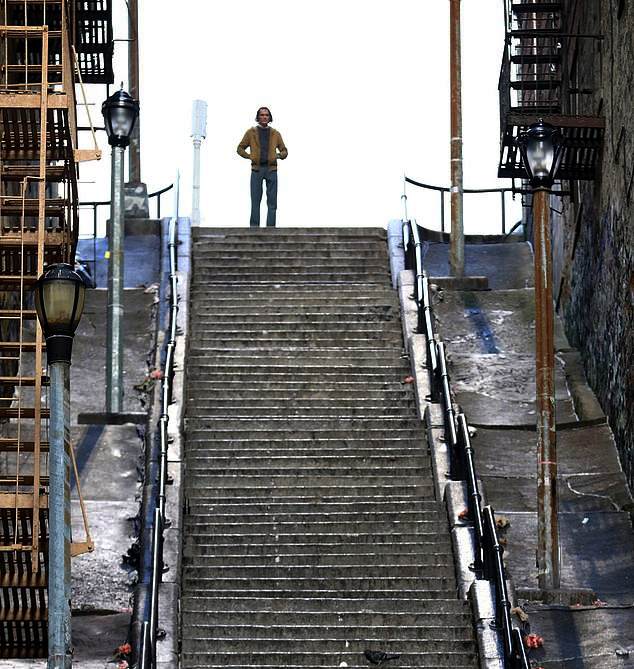 Warner Bros. Pictures
Warner Bros. PicturesIn a contrasting moment to Fleck trying to ascend towards the light above, there are two very striking scenes in the film where the descent down the stairs becomes a moment of euphoria and an epiphany. One symbolic scene occurs when Fleck is fired from his job and he leaves the make-up room and heads down the stairs towards the street. He pauses for a moment and looks at a sign above the stairs which reads ‘Don’t forget to smile’ and then uses a marker to black out some words on the sign which results in ‘Don’t smile’. He then kicks open the door at the bottom of the stairs and daylight floods in from the street. Fleck walks into a literal ‘light at the end of the tunnel’. He is finally able to come to terms with himself and not have to wear a fake smile for society.
The second time the metaphor of the descent down the stairs is employed is when Fleck has thrown away his plastic clown mask and applied his own make-up which is closer and more honest to his outlook. He dances and waltzes down the stairs which once suffocated and exhausted him. Instead of finding the light at the top of the stairs he finally realizes his true path is down below in the very pits and bowels of Gotham City.
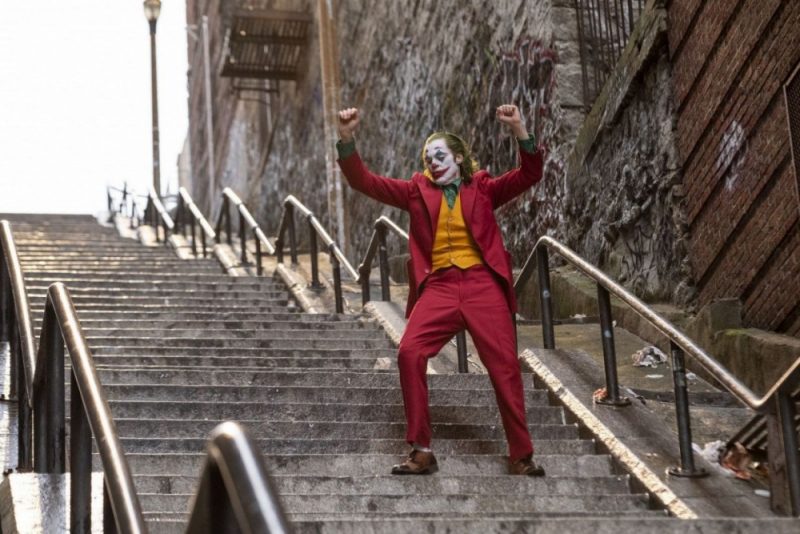 Warner Bros. Pictures
Warner Bros. PicturesThe violence in ‘Joker’ has hit the headlines and much has been written and said about how extreme the film is in terms of brutality. Todd Phillips has crafted a mature film and the manner in which the violence is portrayed and edited is laudable and responsible.
Hollywood is famed for producing mainstream blockbusters where the hero blazes his way through countless numbers of ‘baddies’. Dead bodies pile up, the guns fire away relentlessly, the music reaches an orgasmic high, and the hero ends the mass butchery with a witty throwaway one-liner as he lights up a cigarette.
This is not the case with ‘Joker’.
The action scenes are few and far between, and the violence is brief and never gratuitous or glamourised. Phillips makes the viewer flinch when the violence occurs. He keeps the pacing and editing as real and gritty as possible to ensure that violence is not produced for the sake of ‘entertainment’. People get hurt, people bleed, people die. ‘Joker’ rarely deviates from showcasing violence as a cheap gimmick or turning it into a ‘joyful’ release for the audience.
The editing and pacing of ‘Joker’ hearkens to the slow burning techniques used in the 1970s where characters were given time and space to inhabit the world and make it more ‘believable’ and ‘lived in’. The audience is given the chance to become a fly on the wall and observe the minute detail of the life of the people whose stories they are following upon the screen.
We become eavesdroppers, watching and listening to private moments, and we feel the intense emotions being expressed, we sense the pain and the sadness. Everyone seems to be wearing a mask of some sort or other, and no one is really happy inside. Happiness seems to be a very rare and elusive treasure.
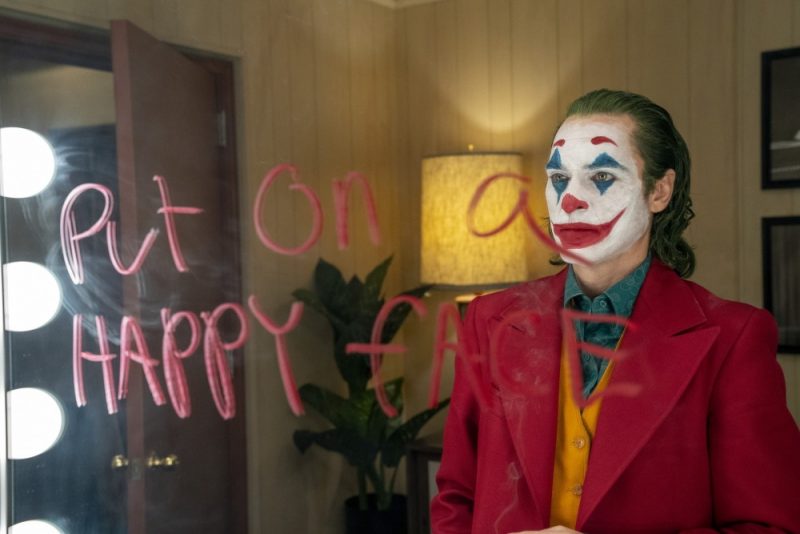 Warner Bros. Pictures
Warner Bros. PicturesThe music by Hildur Guðnadóttir (‘Chernobyl’) reflects the state of the Joker’s fractured mind. She uses violins and cellos to give meaning to the pain and alienation being felt by the central character. Those themes evolve and weave into messianic overtures as the Joker himself begins to change and take control of his external world. The soundtrack is a core part of this film, and Guðnadóttir delivers a truly evocative score. She deserves to be recognized for this work when the awards season comes around.
‘Joker’ is a modern cinematic masterpiece, a daring and unflinching film which has the courage to explore themes and ideas that are often taboo, and it showcases these delicate themes in a manner that will hopefully inspire the audience to treat fellow human beings who are dealing with mental health issues in a more sympathetic and dignified manner. Suicide, mental health issues, alienation and loneliness, lack of respect and acknowledgement, and the exploitation of the most vulnerable people in our world are topics that are far too often kept at a ‘safe and respectable’ distance by society. This film peels away exploitative action scenes, dispenses with gadgets and fancy cars, and steers away from glossy and expensive special effects to spice up the film. What Todd Phillips and Joaquin Phoenix deliver is an honest human drama with a character who is often portrayed as a psychotic lunatic with little emotional warmth or depth. This stark and raw film makes us realize an uncomfortable truth. We all have a little bit of the Joker inside us. We just hide it very well.
This ‘Joker’ will sing and dance all the way to the Oscars.










